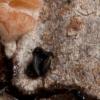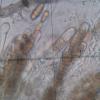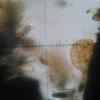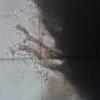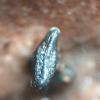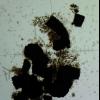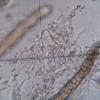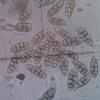
24-12-2025 17:08
Hulda Caroline HolteHello, I have found this propoloid ascomycete on

21-12-2025 09:32
Hello.A tiny ascomycete found embedded in wood in

21-12-2025 21:32
Pol DebaenstHello, Garden, Burgweg 19, Veurne, BelgiumOn 10/1

22-12-2025 23:38
Patrice TANCHAUDBonsoir, récolte sur un mur en pierre, apothéci

22-12-2025 00:47
Patrice TANCHAUDBonsoir, récolte à proximité du milieu dunaire
this fungus (black 0,5-1mm) was found on a dead fallen branches of Abies alba. I do not know the genus / species.
Spores: hyaline dictyospores with (1-3)4-5 horizontal and 0-1 vertical septa
18-27 x 6-10 µm
Thank you for your help,
Pavol
in my opinion is this
Curreya pityophila (J.C. Schmidt & Kunze) Arx & E. Müll., Stud. Mycol. 9: 80 (1975)
Synonymy:
Cucurbidothis pityophila (J.C. Schmidt & Kunze) Petr., Annls mycol. 19(3-4): 201 (1921)
Cucurbitaria pityophila (J.C. Schmidt & Kunze) De Not. [as 'pithyophila'], Sfer. Ital.: 60 (1863). After IF, see also Database.
I search the species for a long time, however, she has not thought yet.
Greetings Peter.
Hi Pavol,
Just some questions :
could you describe ascomata ? Are they sphaerical (or conchate ?) ? Do they collapse when dry ? We don't see very well with pictures.
Could you also give more informations about hamathecium ?
Described ascospores alone are not enough to name a fungus.
Alain

this is clearly not Curreya pithyophila, which has globose and clustered ascomata. Your recolt indeed seems to fit Ostreola formosa, which was described by Barr as having spores around 15-21x6,5-9,5µm.
Is it possible to receive a part of this collection for studying?
regards,
björn
It's better !
I thought of course at Mytilinidiaceae.
Alain
